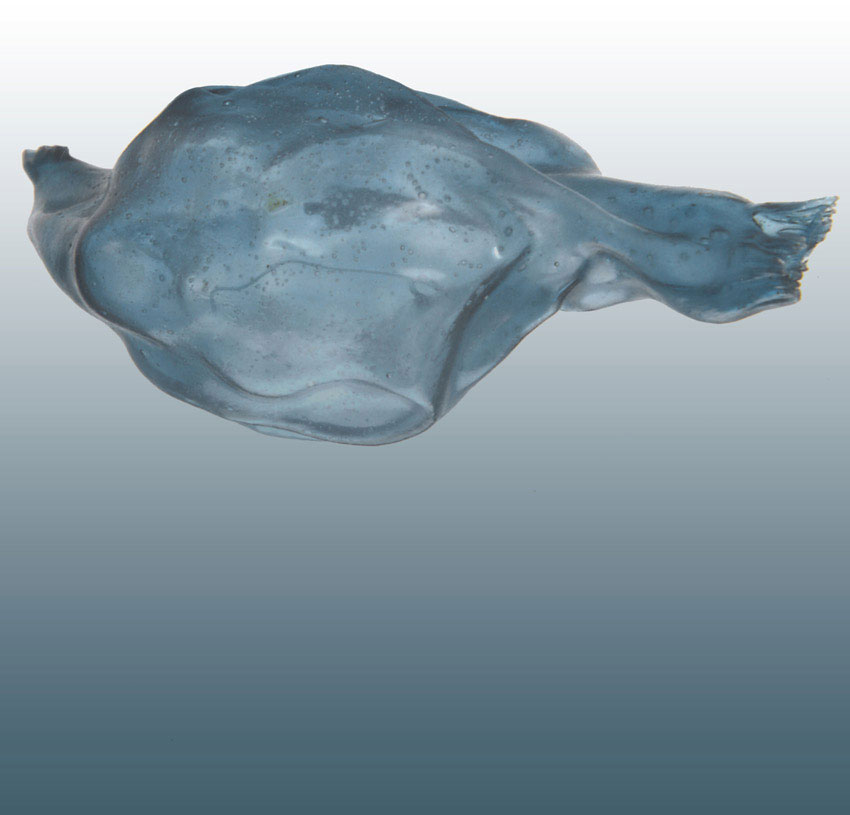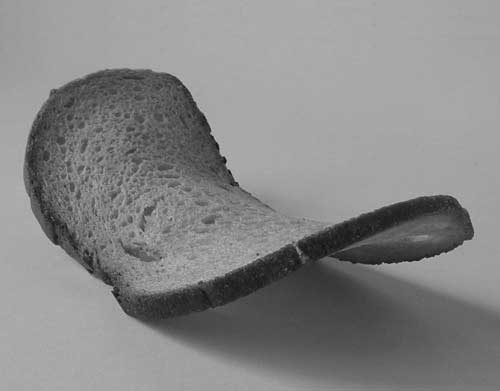Bending Energy. The dynamics of biological processes
The theory of elasticity, formulated within the framework of physical chemistry, describes the molecular processes that take place in biological polymers during their transition from liquid, through gel to solid state. During the setting of a form, planes and membranes change their shapes and deform in a specific drama dictated by bending energy. As it dries, a slice of bread always bends in the same way. A flat object turns into a double-curved, self-supporting crust (a hyperbolic paraboloid) displaying a mathematically determined geometry and considerable durability. The intensity of the bending energy and the speed of the changes depends on the gelling force of the material, its mass, viscosity and water content.
The forms presented were made of biological polymers obtained from animals and plants, such as gelatine, agar, agarose and starch. They are edible and have various flavours and smells.
The initial forms of these objects represented simple shapes and geometries: a sphere, a rectangular prism, a cylinder and a prism. The aim of the research was to observe the deformation processes without any aesthetical or formal interference.
Chaotic curves and fractal deformations are the effect of precise biological self-organisation processes combining the physical and chemical principles of order and beauty in the animated world.


Deformation of a polymer cylinder

An originally spherical form after several spatial deformations and invaginations
